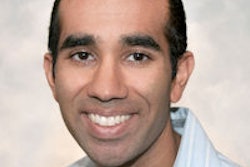Patients prefer hearing exam results from both their general physician and their interpreting radiologist, according to a new study published in the October issue of the American Journal of Roentgenology. This is good news for a specialty challenged to come out of the reading room and into more daily patient contact.
Although radiologists have directly communicated mammography results to patients for years, doing the same with other imaging studies has been controversial, wrote researchers from Beth Israel Deaconess Medical Center and Harvard Medical School. Some radiologists have suggested that the specialty boost its direct patient communication by sending results directly to patients via mail or e-mail -- similar to the current practice in breast imaging. But what about talking to patients directly after their exam?
Direct communication of results by the radiologist could improve patient care in two ways: by closing the loop in communication between a patient and the referring physician and by empowering a patient through active participation in decision-making, lead author Jay Pahade and colleagues wrote (AJR, October 2012, Vol. 199:4, pp. 844-851).
"Our hypothesis was that patients would like to get imaging results more quickly, and if they could do so, their anxiety levels would decrease," Pahade told AuntMinnie.com. "We did the study to get a better sense of what patients want and whether this practice model is feasible."
The study included 86 English-speaking outpatients undergoing either nononcologic CT of the chest, abdomen, and pelvis (37 patients) or nonobstetric ultrasound (49 patients) between December 2010 and June 2011. Immediately after their exam, patients had a consultation session with a radiology fellow, during which they received preliminary results.
Each participant responded to a survey that included questions about preferences regarding communication of results, knowledge of a radiologist, and anxiety level before and after radiologist-patient consultation. Pahade's group also tracked the average wait time between the end of the imaging examination and the consultation and the duration of the consultation.
The team found the following:
- 56% of patients identified a radiologist as a physician who interprets images.
- Before imaging, 81% of patients preferred hearing results from both the ordering provider and the radiologist; this increased to 91% after the consultation.
- Before consultation, 98% of patients indicated they would be comfortable hearing normal results or abnormal results from the person interpreting the examination; the number increased to 99% after consultation.
- 99% of patients agreed or strongly agreed that reviewing their examination findings with a radiologist was helpful.
- 98% of patients indicated they wanted the option of reviewing or always wanted to review future examination findings with a radiologist.
After consultation with a radiologist, 48% of patients said that their anxiety decreased, while 15% said it increased and 32% said their anxiety level was unchanged. The average wait for consultation and the duration of consultation were both about 10 minutes for CT and one minute and seven minutes, respectively, for ultrasound.
Restructuring the method of delivering results to patients could enhance not only the daily practice of radiology but also the value of a radiologist, Pahade's team wrote. And a blended practice pattern of establishing patient relationships through direct communication of results and imaging review may help patients make more informed decisions about their health.
One of the study's limitations is that the patients who elected to participate were already open to receiving imaging results from a radiologist, Pahade conceded. Putting this kind of practice model into place could take some logistical work -- and could temporarily decrease revenue, as radiologists could expect a cost associated with the time needed to review results directly with the patient, which is not reimbursed.
"Communicating results to patients the same day as the exam is the ideal, but it could mean that practices have to restructure their work day, or assign a particular radiologist to be the patient consultant for the day," he told AuntMinnie.com.
In any case, the study showed that patients do want direct communication of results after imaging examinations, are comfortable hearing both normal and abnormal results, and feel a decrease in anxiety after the consultation. The time added to daily practice by incorporating results communication seems reasonable and will likely decrease with time, Pahade and colleagues concluded.




















